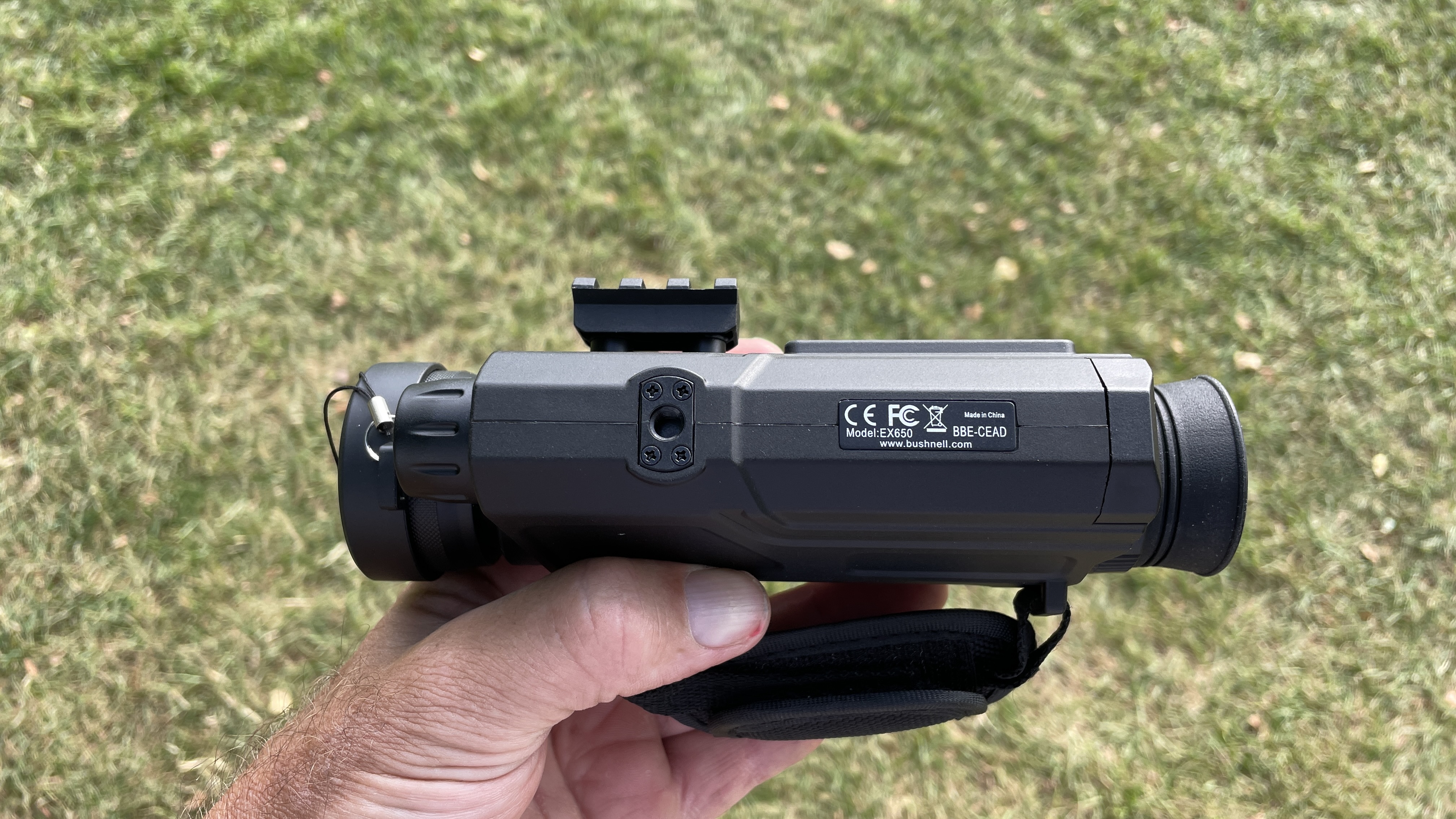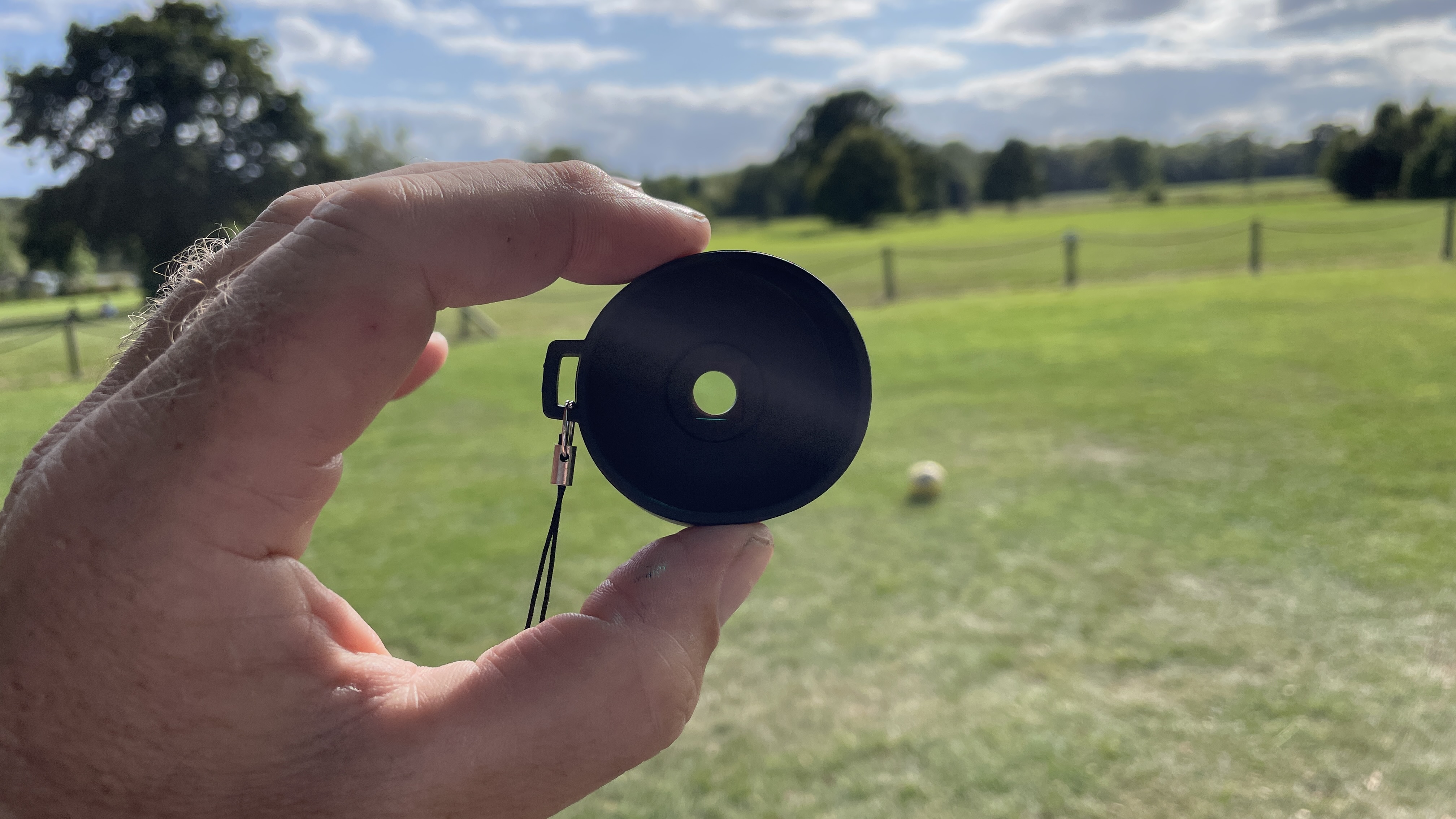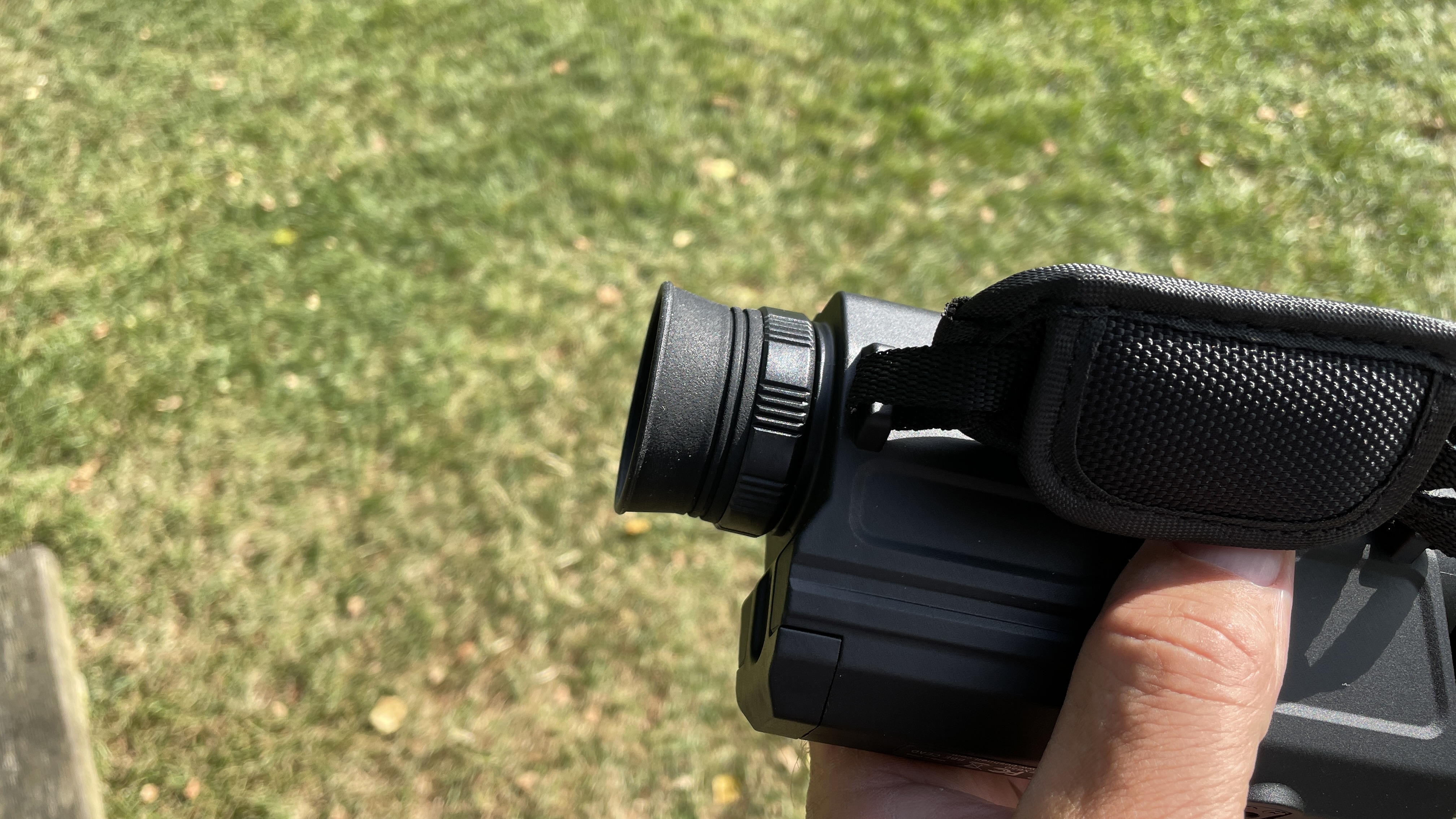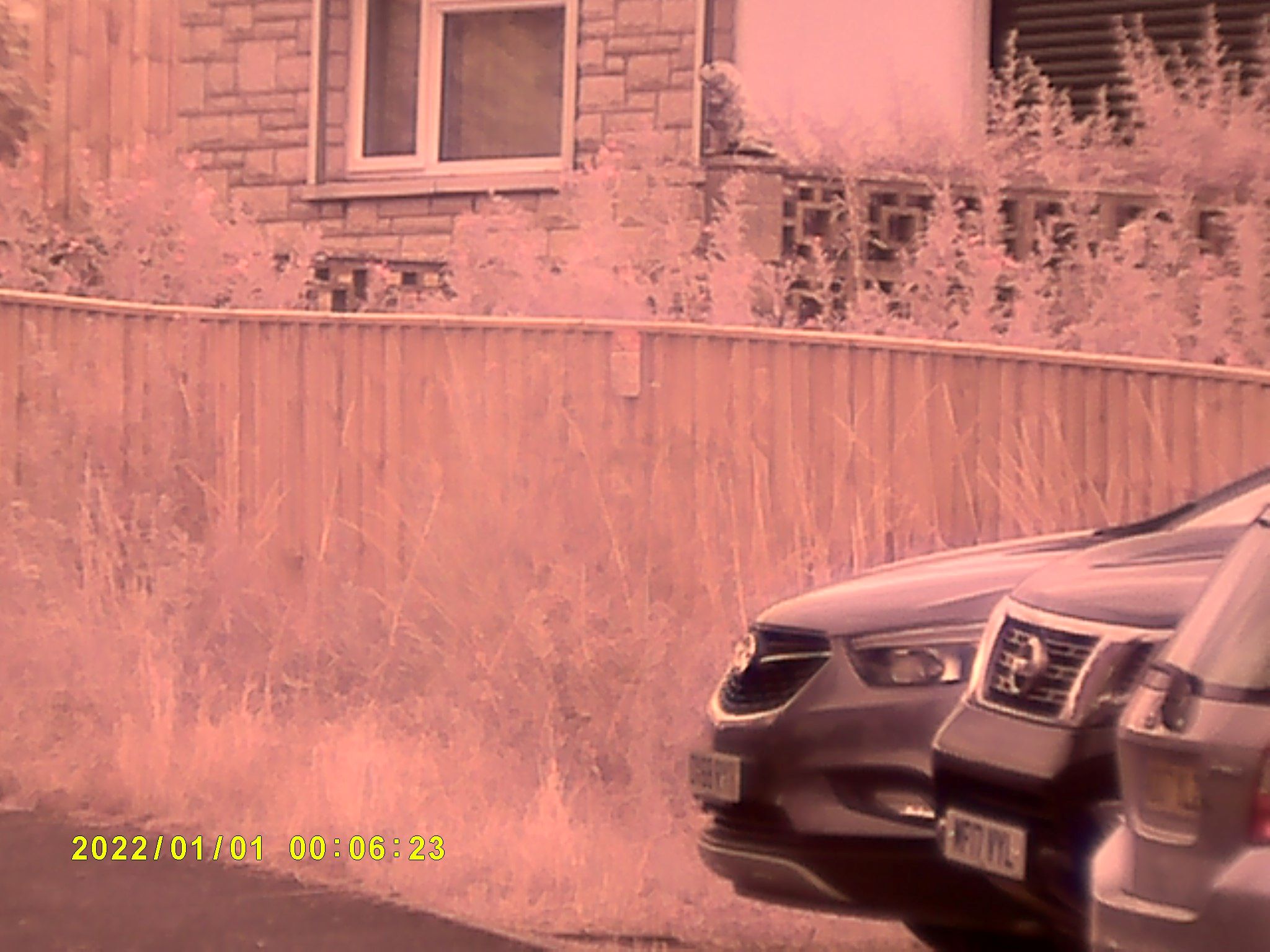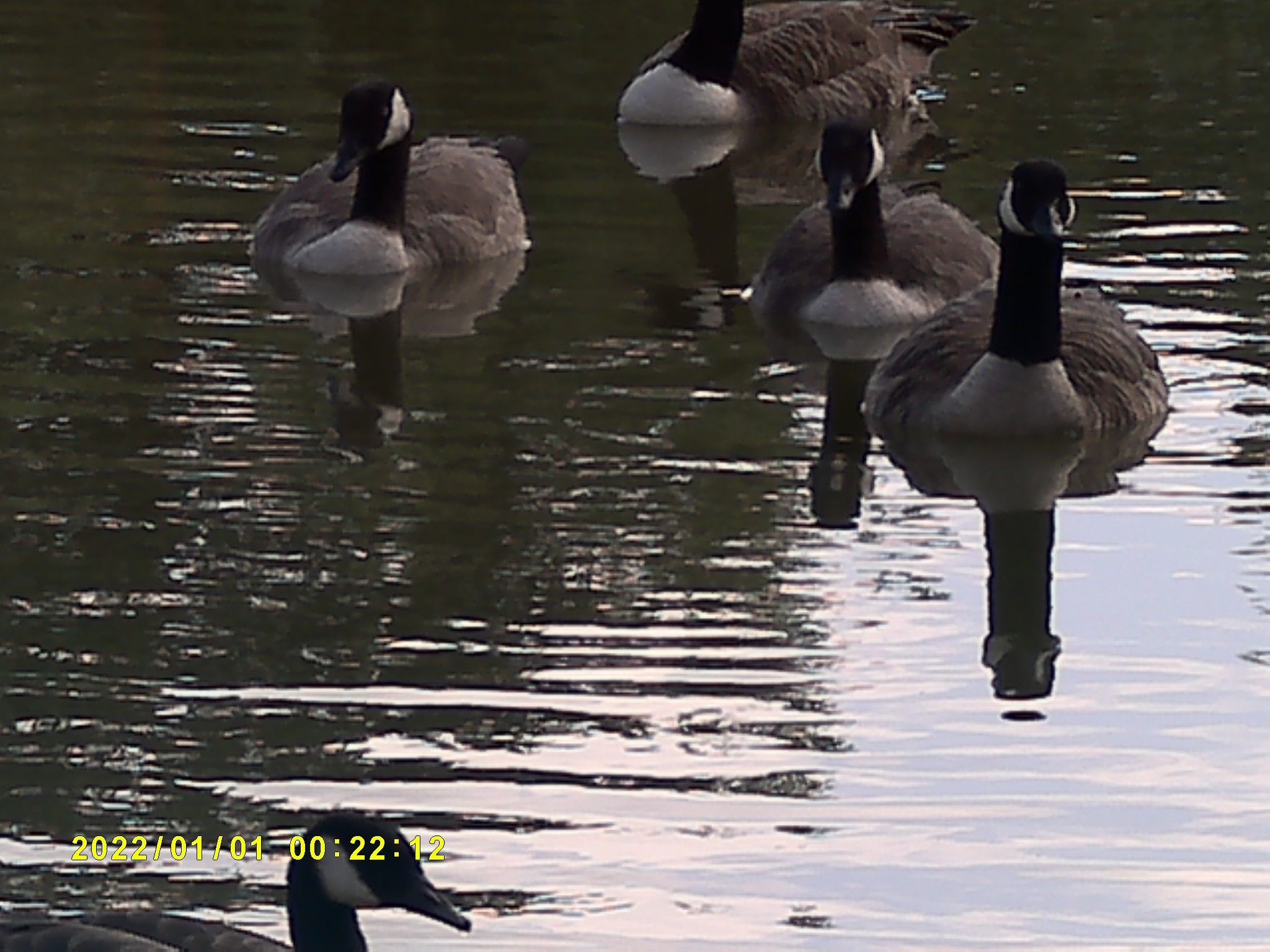Key specifications

Design: Roof prism
Magnification: 3x
Objective lens: 5 x 32mm
Eye relief: 22mm
Weight: 13.8 ounces (391 grams)
Dimensions: 7.5 x 3 x 3 inches (19.05 x 7.62 x 7.62 cm)
Durability: Plastic case without waterproofing
The Bushnell Equinox X650 Digital Night Vision monocular is designed for those on a budget. Despite its price, it includes features typically found in higher-end models.
Upon first use, the low cost is quite noticeable; it feels lightweight due to its plastic construction. Weighing 13.8 ounces (391 grams), it isn’t exactly light for a monocular, but the Bushnell Equinox X650 delivers more than most alternatives in this price range.
Its robust built-in infrared (IR) illuminator allows for clear sighting in minimal light or total darkness. The 32mm (1.26 inches) objective lens does a reasonable job of capturing light. The captured image is processed through a digital CMOS sensor and shown on a micro-liquid crystal display (LCD). Depending on the model, images viewed on the LCD can be magnified by 3.0, 4.5, or 6 times. However, increasing the magnification often results in grainy images due to the limitations of available light.
Bushnell Equinox X650 5×32: Design
★★★
- Simple, well-placed controls
- Adjustable eyepiece diopter
- IPX4 water resistance

The casing of the Bushnell Equinox X650 Digital Night Vision monocular is made of plastic with a textured finish for improved grip. At the top, you will find four well-spaced buttons (including a power switch, mode button, and digital focus controls). The eyepiece features a rubber cup and a diopter focus wheel that adjusts the LCD screen focus. Additionally, there is another focus wheel at the objective lens end. The unit includes a lens cap with a filter that allows for daytime usage.
Just below the objective lens is an infrared illuminator that can project images as far as 650 feet (200 m). A Picatinny rail on the side facilitates attachment to a rifle. A rubber cover protects the mini USB port, micro SD card slot, and video-out connector, and a tripod fixing point is also available.
On the opposite side, there’s a hand strap, which is particularly useful since the unit is somewhat bulky. Beneath the eyepiece is the battery compartment, which accommodates three AA batteries.
The focus wheels felt quite stiff at first. Operating the monocular required both hands: one to hold it up to your eye and the other to adjust the controls. The top-mounted digital focus adjustments worked effectively but were sometimes hard to find, making it necessary to pull the unit away from your eye to make the settings.
The diopter for the LCD screen was adjustable but needed us to hold the monocular a few inches away from our eye to achieve optimal clarity.
The focus is locked in at 100%, which restricts the field of vision and could be improved.
The waterproof layer on the controls makes achieving a clear photograph challenging. You need to apply considerable pressure on the shutter button, resulting in blurry images. Utilizing a tripod may help. However, when you press down slowly to avoid shaking, the camera frequently powers off since the shutter button also functions as the power switch.
Bushnell Equinox X650 5×32: Performance
- Basic yet decent monocular
- Design flaws that lead to blurry images
- Night vision range of 650 feet
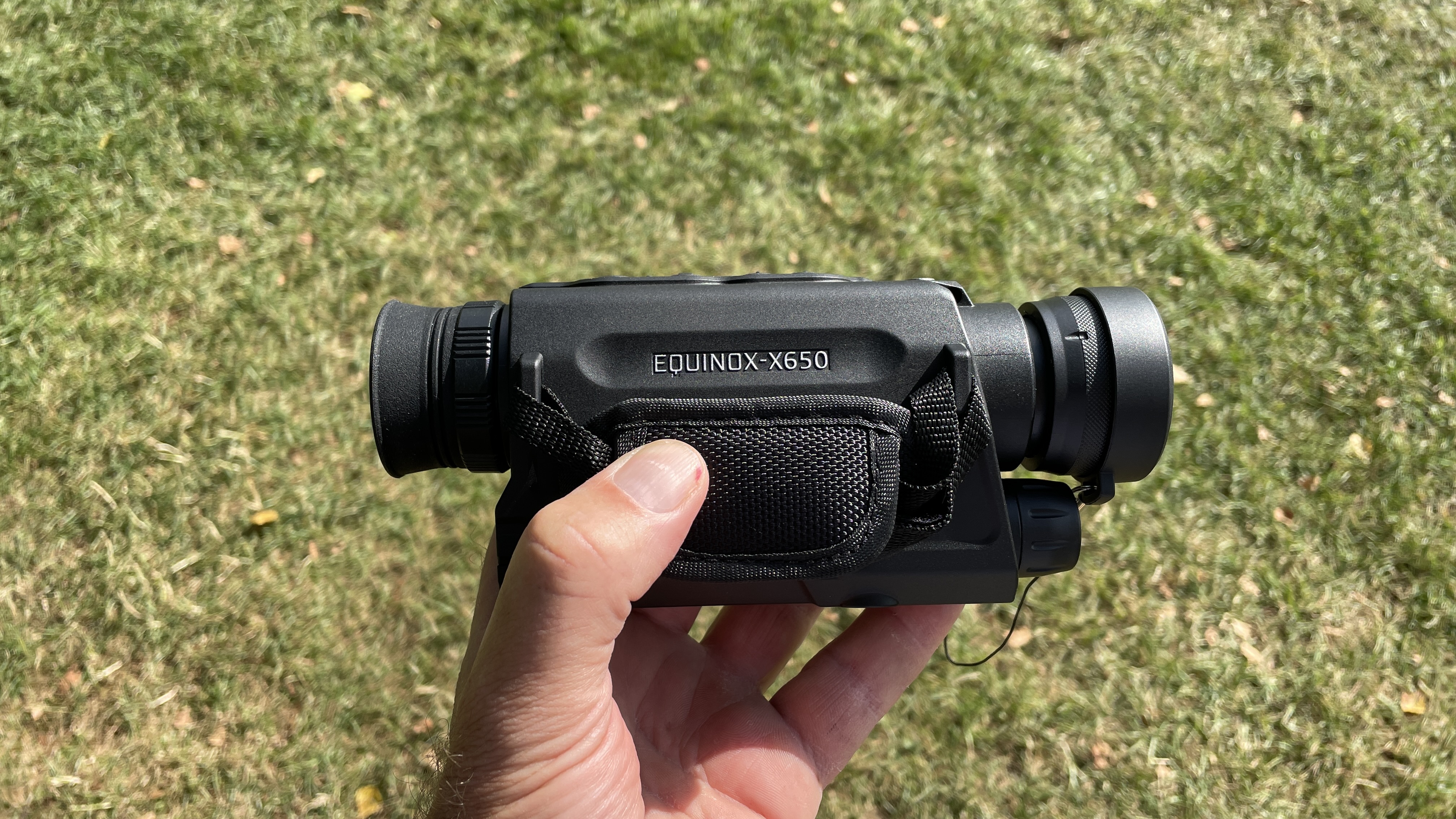
The Bushnell Equinox X650 performed adequately in our testing. However, the pictures taken during the day are only suitable for identification purposes, and the nighttime imaging could be improved. Still, for those looking for an affordable entry into night vision, the Bushnell Equinox may be worth considering.
Bright night lights caused some confusion for the Bushnell Equinox X650. If the sensor detects excessive light, it too quickly shifts into daylight mode. This can be managed by turning away from the light and gradually looking back, but less sensitivity would be beneficial.
During our tests with the Bushnell Equinox X650, we experienced the effects of wildfires, which produced stunning and vivid sunsets across the U.K. as smoke diffused light, turning the moon red. We could clearly observe the moon under these conditions. Thanks to the IR illuminator built into the device, we achieved greater clarity with the moon than a typical monocular would allow. Night vision devices have the capability to detect a wider spectrum of light, including visible and infrared.
The X650 features a 3x zoom, enhancing its capability for stargazing. However, images saved on the memory card often appeared grainy. The device includes a body-mounted focus wheel which minimizes reliance on digital zoom.
The included daytime filter restricts the light reaching the sensor, preventing the CMOS infrared sensor from becoming overloaded. This resulted in a red tint and significantly boosted the contrast.
This filter is unnecessary at night, the time when the Equinox X650 excels. While the camera aspect is limited, the infrared booster…
Placed beneath the 32mm objective lens, the device produces impressive results.
During a nighttime outing at a lake, we discovered an enjoyable use for the night-vision monocular: observing fish! The stillness of the water at night meant the infrared booster didn’t reflect much light back to the sensor, allowing us to view fish at considerable depths. We also spotted bats hunting insects near the trees, although tracking them was tricky due to the small 32mm objective lens.
If you’re not aiming for large prints of night images, the Equinox X650 performed well for its intended purpose. It could be an intriguing tool for a nighttime stroll with kids.
Bushnell Equinox X650 5×32: Functionality
★★★
- Bi-functional for day and night with a filter
- Can capture photos and videos
- Images are of low resolution
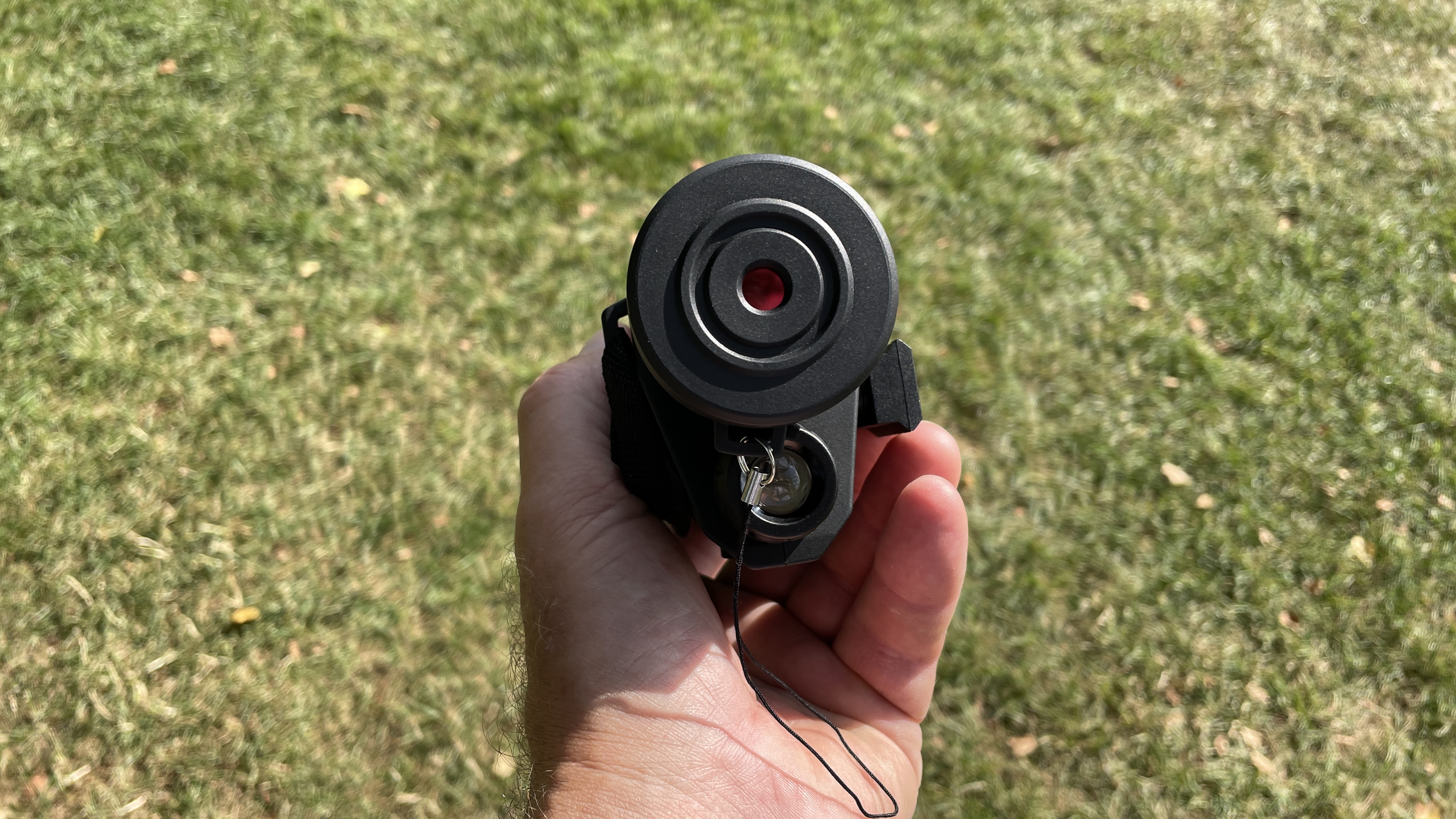
The capability of using the Equinox X650 for both daytime and nighttime visuals is a plus. However, like many features of this monocular, both modes have certain limitations. Daytime images often came out unclear because of the shutter pressure required. Nighttime shots had shorter shutter times but also suffered from low resolution, resulting in mere snapshots.
This may not be a concern for children who prioritize usability over image quality. Nonetheless, discerning adults would find it challenging to obtain usable images.
The digital zoom offers three settings but only crops a portion of the original picture, so increasing the zoom also increases graininess. The digital zoom wasn’t very effective at night, though the camera includes a focus wheel mounted on the body, which proved to be a useful feature. However, positioning your hand for focus obstructed the IR illuminator, causing the camera to effectively turn off. This forced us into an awkward hand position for focusing, making it hard to keep the camera stable.
Adjusting the IR booster at night yielded mixed results. Increasing brightness often overwhelmed the sensor, causing a toggle between IR mode and daytime mode. We found that setting 1 was less troublesome, but it ultimately comes down to personal preference.
Bushnell Equinox X650 5×32: User reviews
Users describe the device as well-priced but basic. Notably, a user manual is not included; it must be downloaded from the manufacturer’s website.
How we tested the Bushnell Equinox X650 5×32
We conducted a thorough review of each instrument, considering its construction, design, functionality, and on-site performance. We also evaluated the accessories provided and suggested other equipment that might enhance the experience.
Each team member meticulously tests every instrument and possesses expertise in its respective area. Hands-on experience is a critical aspect of the evaluation process.
Should I buy the Bushnell Equinox X650 5×32?
In our evaluation, the Bushnell Equinox X650 Digital Night Vision is a solid entry-level monocular that performs satisfactorily across various uses, without excelling at any specific one. It’s a valuable addition for wildlife enthusiasts or casual observers. While it can be employed for stargazing, the camera’s capabilities are limited, though the focus range and light management are decent.
If the Bushnell Equinox X650 Digital Night Vision isn’t suitable for you, consider the Nightfox Prowl night vision goggles, which are similarly priced and may offer hands-free convenience. Alternatively, the Goyojo handheld thermal imaging camera introduces you to thermal imaging as opposed to infrared, or the compact and affordable Nightfox Cub digital night vision monocular could be a good option.


